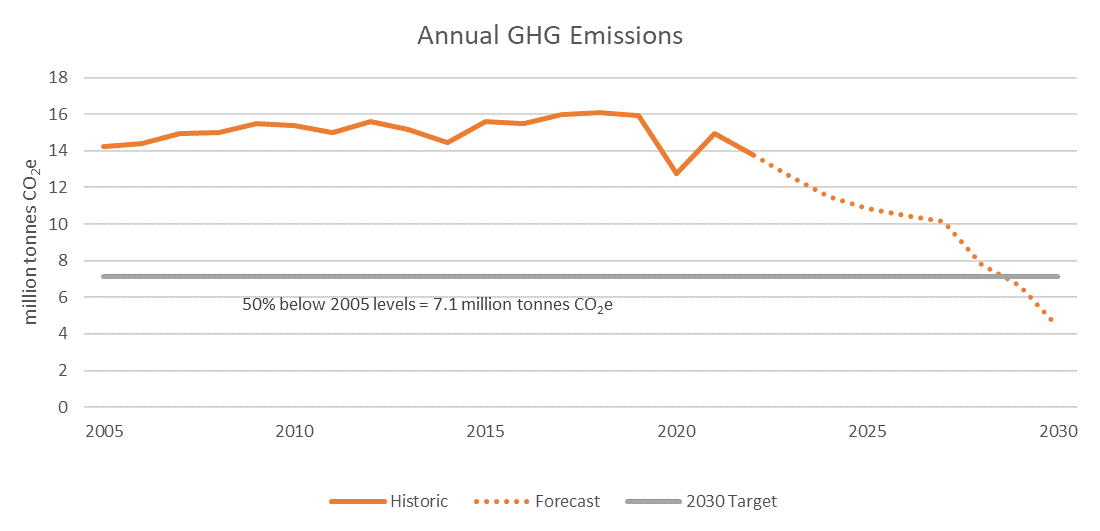
We’re changing the way we generate power to better protect the environment and move towards a cleaner energy future.
Your expectations and federal regulations on greenhouse gas (GHG) emissions continue to evolve. This means we’re increasing our renewable generation, retiring conventional coal and exploring low- and non-emitting technologies.
Our Goal
We’re committed to reaching net-zero GHG emissions by 2050, or earlier. We also maintain a GHG emissions reduction target of 50% below 2005 levels by 2030.
Why Reducing Emissions Matters
Emissions, including those from the generation of power, impact:
- climate
- natural resources
- health
GHG emissions can last hundreds of years in the atmosphere. This is why it’s important for us to do what we can now. You can help by being energy efficient at home and at work. By using less power you’ll save money and help protect the environment.
For more information, check out Power Savings and Programs.
Our Emissions
Every year, we report our emissions and emissions intensity to regulators and stakeholders in our Annual Report and Corporate Responsibility and Sustainability Report. We count emissions from power generated by our facilities and by Independent Power Producers in the province.
In 2023, our GHG emissions were 13.6 million tonnes of CO2e*. This is a 1% decrease compared to 2022.
Reasons for a reduction in 2023 emissions include:
- Reductions in coal emissions in 2023 compared to 2022
- An increase in CO2 capture at our Carbon Capture and Storage facility (Boundary Dam Unit #3)
We expect to see our emissions continually decreasing in the coming years as shown in the chart below.

*CO2e stands for CO2 equivalent. This is the standard measurement for reporting GHG emissions. The measure includes Carbon Dioxide (CO2) emissions as well as the CO2 equivalents for Methane (CH4) and Nitrous Oxide (N2O) emissions.
We’re Seeing Progress
We’re on our way to a cleaner power future for the province of Saskatchewan.
We continue to reduce the use of conventional coal-fired generation and add renewable and low-emitting generation to our grid. Our first-ever utility-scale battery energy storage system (BESS) came online in July 2024 and the natural gas fired Great Plains Power Station will come online later this year. Both BESS and natural gas allow us to bring more renewable generation online. The 200-megawatt Bekevar wind facility will also come online in 2024 — with plans for more renewables in the future.
We’re also investing in our infrastructure. With a modern grid, we’ll be able to:
- support more solar and wind generation
- improve the reliability of our power service
- reduce our GHG emissions
Learn more about the projects we have on the go at Planning and Construction Projects.
We’ve also been investing in a natural climate solution that removes CO2 from the atmosphere – trees. Since our Shand Greenhouse opened in 1991, we’ve grown and distributed over 14.5 million tree and shrub seedlings across Saskatchewan. Seedlings are given to:
- rural landowners to establish shelter belts
- environmental groups to support habitat projects
- community groups to support cultural projects or activities
We estimate about 9.5 million of those 14.5 trees and shrubs are still living today. Together, they can remove more than 100,000 tonnes of CO2 each year. We continue to invest in the Shand Greenhouse to replace aging infrastructure and improve efficiency. Learn more about our Shand Greenhouse and eligibility for seedlings at Shand Greenhouse.
To reach our goal of a net-zero GHG emissions power system, we’re exploring more non- or low-emitting generation options and opportunities to offset our GHG emissions, while meeting the growing need for power.

